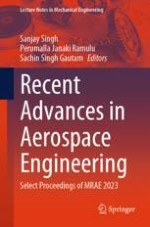2024 | OriginalPaper | Buchkapitel
Application of Artificial Neural Network in Impact and Crashworthiness: A Review
verfasst von : Dipjyoti Nath, Ankit, Debanga Raj Neog, Sachin Singh Gautam
Erschienen in: Recent Advances in Aerospace Engineering
Verlag: Springer Nature Singapore
Aktivieren Sie unsere intelligente Suche, um passende Fachinhalte oder Patente zu finden.
Wählen Sie Textabschnitte aus um mit Künstlicher Intelligenz passenden Patente zu finden. powered by
Markieren Sie Textabschnitte, um KI-gestützt weitere passende Inhalte zu finden. powered by
